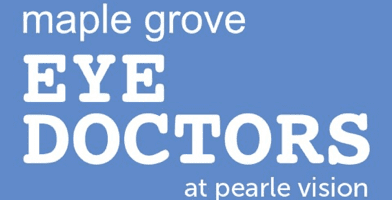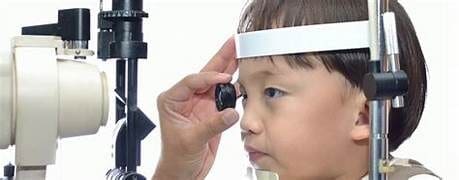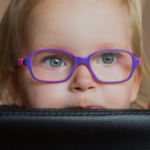Vision Screening at the Doctor’s Office or at School — is it Good Enough for Your Child?
Is a vision screening at school or at the Pediatrician’s Office good enough for your child when 80% of learning is visual?
Raise your hand if you think that it’s not necessary to have your child’s eyes examined by a doctor because “that’s taken care of at school.”
If you’re one of the many well-meaning, but misinformed parents with a hand in the air, listen up: It’s often incorrectly assumed that if a child passes a school screening, then there is no vision problem. Most school vision screenings only test for clear distance vision—but that’s only a small part of the puzzle.
More complex vision skills are needed for successful reading and learning, and these skills are tested for in a comprehensive eye and vision examination, by one of our eye doctors – choose a time when your child is alert and happy. Schedule your Child’s Eye Exam Now .
Preschool-age children do not need to know their letters in order to undergo certain eye tests, even when they are too young or too shy to verbalize.
Why are children’s eye exams so important?
Eye exams for children are very important to insure your child’s eyes are healthy and have no vision problems that could interfere with school performance, behaviour and potentially affect your child’s safety. This is important at every age!
Early eye exams also are important because children need the following visual skills that are essential for optimal learning:
- Excellent visual acuity at all distances
- Accurate and comfortable eye teaming skills
- Accurate eye movement skills
- Accurate and comfortable focusing skills

For children who are free of risk factors, eye exams are recommended at 6-12 months old (done at N/C in our practice as part of the National InfantSEE program), 3 years old, before kinndergartenn, and then every two years thereafter. Children who are at risk for vision disorders may need to be tested more often depending on the recommendation of the health care provider. Risk factors include:
- Prematurity and low birth weight.
- Family history of retinoblastoma and congenital cataracts.
- If the mother has an infection during pregnancy—such as toxoplasmosis and cytomegalovirus.
- Difficult labor, which may be associated with fetal distress or low Apgar scores.
- Crossed eyes or “lazy eye.”
- Eye rubbing and/or squinting
- Excessive blinking
- Failure to maintain eye contact
- Poor eye tracking skills
- Developmental delay, cerebral palsy, or seizures. PLEASE don’t let poor vision hold your child back! Schedule an Eye Exam

Eye muscle function, near vision, nor depth perception are tested in a vision screening at school (unless of course, we’re doing the screening) are all the things that can affect a child’s ability to learn. Roughly 80 percent of what a child learns in school is information that is presented visually!
Everywhere a child’s eyes look they’re seeing something for the first time. It’s up to you to make sure they are seeing everything as clearly and vividly as possible.
Experts say 5% to 10% of pre-schoolers and 25% of school-aged children have undetected vision problems. Early identification of a child’s vision problem is crucial because; if left untreated, some childhood vision problems can cause permanent vision loss.
Just because a parent doesn’t wear glasses it is not an indication that a child will not; children are spending more time on digital devices with exposure to blue light that affects vision.





